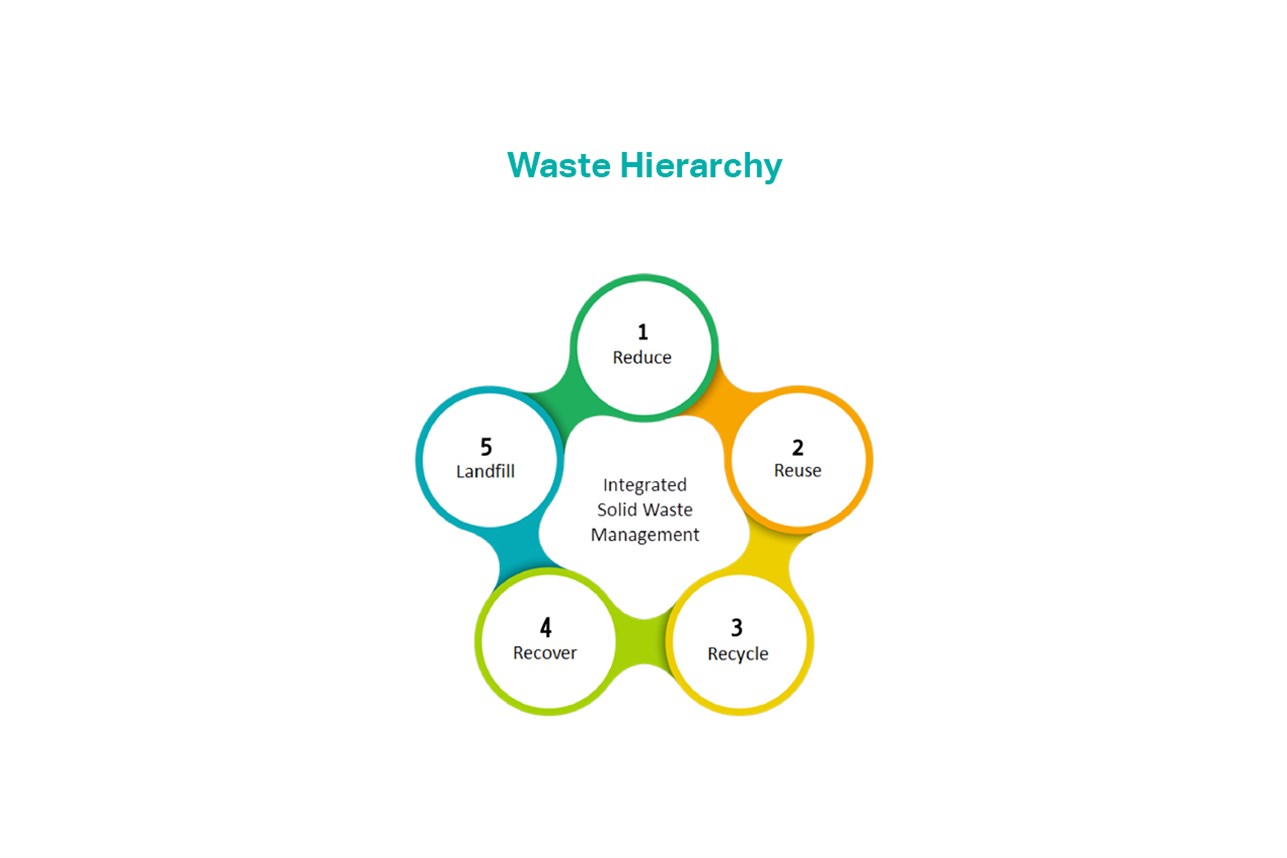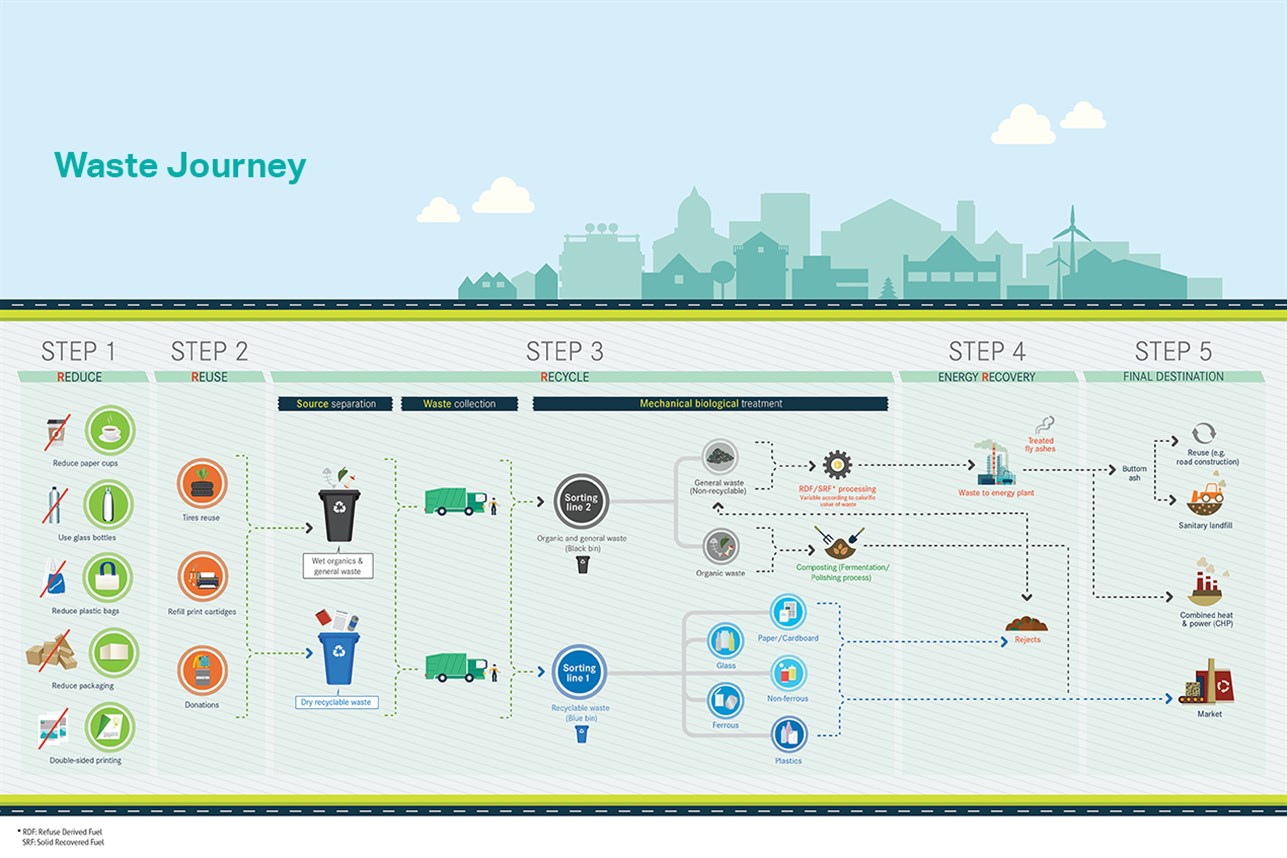
As global populations continue to expand and migrations from rural communities to urban communities accelerate, solid waste management (SWM) has become of a universal concern.
In Lebanon, the drastic lack of a planned and sustainable SWM strategy has resulted in the degradation of the physical and social environments. The only recourse has been on-the-spot, haphazard and ill conceived emergency measures; political expediencies rather than technically sound solutions. The result – well-documented by the local and international media – has been refuse in the streets and on natural habitats, as well as public health risks, social discord and civil unrest.
But SWM is not just a Lebanese problem. The need for SWM is mounting in urgency in many developing countries. National governments, municipalities, private sector entities, and individuals alike should all be concerned.
Why is effective SWM planning so complex ?
The sheer number of factors makes finding a single integrated SWM solution quite challenging. Consultants must consider demography, economics, society, technical aspects, and the environment.
Population count, for instance, has a substantial effect on the amount of generated waste. Both the resident population and migrants come into play. For example, in recent months, Lebanon has witnessed a massive influx of refugees. This influx has increased tensions on the basic solid waste infrastructure of vulnerable communities and left a heavy burden on their already-fragile environmental resources.
Population wealth also has a direct impact. It affects both the type and quantity of solid waste. As spending power goes up, so too do waste quantities. Government institutions charge the community for SWM services. Charges are calculated through economic/financial feasibility assessments that take into consideration – among other things – service charges, financing and cost recovery.
SWM has clear social repercussions. For example, citizens become more willing to separate recyclables at source when awarded with good incentives. They may react to proposed waste treatment/disposal sites. A SWM strategy that does not fully consider social concerns and invite public participation has little chance of long-term success.
Notable SWM measures
Many notable SWM measures in recent years have prevented health risks and environmental degradation. The most successful ones fall under waste avoidance: socially-responsible action to avoid generating waste in the first place and to reduce the need for subsequent treatment and disposal. For example, supermarkets in the UK are required to charge customers for each plastic bag. So, shoppers reuse the bags at their next shopping occasions. This very simple step is expected to help cut down around 7.6 billion bags every year!
Another example is community opposition. All communities generally oppose the siting of a landfill and other SWM facilities in their neighborhood. The protest is known as the Not in My Backyard syndrome. Landfills are subsequently sited in places where wind-blown waste, odor and gases, leachate, and increased traffic have minimal impact on adjacent communities.
Sifting through the waste
Solid waste is by far the most heterogeneous material generated by humans. The technical and environmental challenges it poses can only be resolved through a clear understanding of appropriate treatment and disposal technologies. These technologies consider origin (residential, commercial), type (municipal, construction), composition (organics, plastics and other recyclables), and chemical and physical properties (density, moisture content, calorific value).
To assess all the waste’s parameters, elaborative field characterization surveys and laboratory analyses should be repeated seasonally, accounting for numerous changes. For example, organic/moisture content increase during the summer months because people eat more fruit and vegetables. Also, one tends to find more plastics in developed communities, rather than in rural areas.
Even in a short survey, it is important to diversify samples from many neighborhoods. Another potential bias comes from the fact that a lot of recyclable waste is separated at source by peddlers and scavengers who seize plastics and metals before the waste reaches the collection vehicles.
So with all the aforementioned considerations, the question remains:

There is no one-size-fits-all solution!
It will be apparent that sound decision-making in SWM is a complex task. Considerations need to take place on several levels simultaneously: local-regional-national-international – each with different priorities. And private sector interests also need to be considered.
Importantly, both short- and long-term plans need to aim for results that can work with the local constraints and site-specific conditions. There is no zero waste option. It is pointless to plan and design the ‘perfect’ technical system if it cannot be practically implemented.
An integrated and cost-effective solution for the most common waste type (MSW from residential and commercial premises) must evaluate how each management scenario affects the entire management chain. This means looking at how the various components fit together: storage, collection, transfer, treatment, and final disposal.
Think of it as a high-speed train with many carriages linked together, each with freedom to sway with the difficult bends, but which ultimately stay together without coming off the rails. The potential solution can be achieved through the Integrated Waste Management Hierarchy (illustrated below). The ideal result would promote a unified approach to meet the community needs.
Waste journey
The integrated approach is illustrated below as a material flow diagram, which takes the elements of the Waste Hierarchy and allows waste management professionals to mix and match technologies to ultimately arrive at the solution that best corresponds to economics, engineering and environmental considerations.



